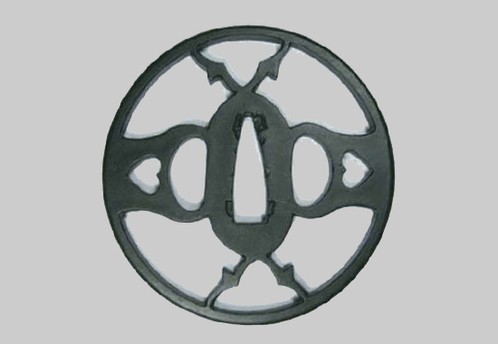

More informations about this product
Tate Maru Gata shaped Tsuba (Slightly oval in vertical). Design of Japanese Ginger (Myoga) and wild geese (Kari) in Sukashi opening, Sukidashi type circled border, presence of Kogai and Kozuka Ana.
This Tsuba symbolically represents Japanese ginger (Myoga - 茗荷) on the side and flights of wild geese (Kari - 雁) at the top and bottom.
The pronunciation of Japanese ginger, Myoga, also has another meaning with different Kanji, 冥加, meaning 'Divine Protection'. This pattern has therefore become a lucky sign, which is often found in temples, shrines, and on Kamon, family crests.
The flight of wild geese is a symbol of omen. There are many stories of a Samurai, paying attention to a sudden flight of geese, thus foiling an ambush.
One of the most famous is that of the warrior Minamoto no Yoshiie (1039-106), known as Hachimantarō, who during the Gosannen War (後三年合戦) was on his way to battle when he noticed a flock of geese emerging from a field. Suspecting that the enemy was hiding in the grass, he sent his men to wake them up, where they found more than thirty lying in wait. His cunning understanding of military strategy and his powers of observation earned him the respect and gratitude of his men.
This very airy Sukashi opening work is typical of the Tsuba of the Owari province. Their production dates back to the middle of the Muromachi period and experienced a boom during the Sengoku Jidai, in particular because the province of Owari was ruled by the famous and feared Oda Nobunaga.
Share your opinion
error Your review appreciation cannot be sent
feedback Report comment
check_circle Report sent
error Your report cannot be sent